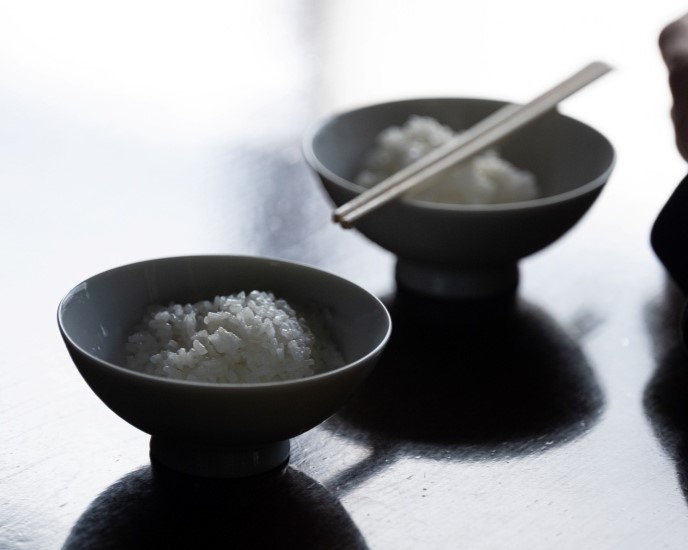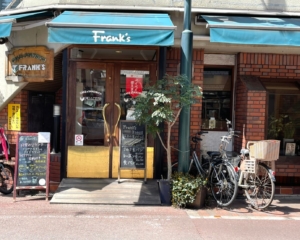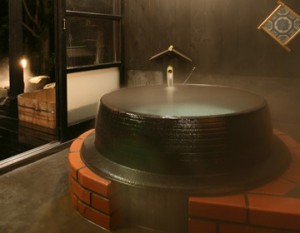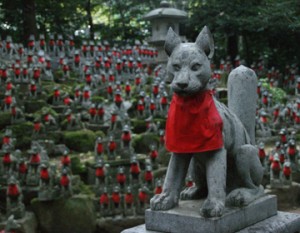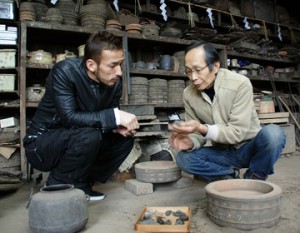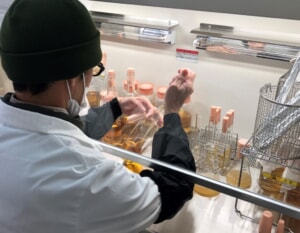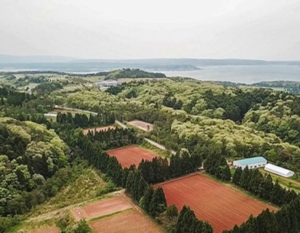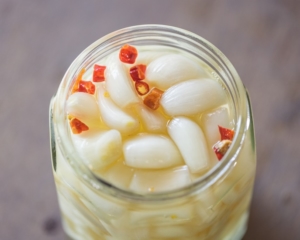Kawaba Village, located in the northern part of Gunma Prefecture, is a farming and mountain village with a population of about 3,000, formed by four first-class rivers, including the Usuene River, which flows from Mount Muson (Hotakayama). In Gunma Prefecture, which is not known for its rice production, Kawaba Village’s Koshihikari “Yukihotaka” and a new variety “Yudai 21” have attracted attention for their high quality, winning consecutive gold awards at the Rice and Food Taste Analysis Competition, one of the largest rice competitions in Japan.
Phantom rice” grown in a perfect environment for rice cultivation

Kawaba Village, located at the southern foot of Mt. Muson, is a rural village with a wide landscape, where rice cultivation has flourished since ancient times and many of the villagers are involved in farming. Kawaba Village’s rice has long been distributed and consumed exclusively locally, thanks to the combination of cold melt water from Mt.
For a long time, the rice in Kawaba Village was distributed and consumed only locally, and the villagers were never aware of how tasty the rice they ate was.
However, when Kawaba Village chose the path of self-reliance without merging with neighboring municipalities after the Heisei Era merger, it began to feel a sense of crisis that the village might decline if agriculture, the village’s main industry, did not also become self-reliant.
The entire village began to take on the challenge of making Kawaba’s rice, which they consider delicious and enjoy eating, into a brand and delivering it to as many people as possible in order to make the village’s agriculture industry independent.
Yukihotaka” and ‘Yudai 21,’ which have won gold medals at numerous competitions in succession.

Kawaba Village’s Koshihikari rice, which had been distributed only locally, was to be branded and delivered to a large number of people. To achieve this, the villagers decided to brand the rice they had originally produced as “Yukihotaka” (snow hotaka), since it was grown with melted snow from Mt.
We decided to see how our delicious “Yukihotaka” rice would be evaluated outside of the village, so we entered it in the “Japan’s Best Rice Contest” for the first time in 2006. We entered it for the first time in 2006, and it suddenly won third place, which was a very good result. It gave us a lot of confidence that our rice would be recognized not only by ourselves but also by others,” recalls Satoshi Kobayashi, a rice grower at Yukihotaka Co.
Since 2007, the cooperative has entered its rice in one of the largest rice competitions in Japan, the “Rice and Taste Analysis Contest,” and has received high evaluations every year, which gave them even more confidence. The company now sells, collects, and bags rice, and has established a system for quality control of Kawaba-mura brand rice through the company.
Growing rice true to the basics, taking advantage of local characteristics

The International Comprehensive Section, which is the main section of the “Rice and Taste Analysis Competition” with over 5,000 total entries, has produced around 18 gold medal winners every year. The fact that 12 gold medalists and 19 gold medal winners have been awarded in the 17 years since the first entry shows how well suited this land is for rice cultivation. In order to make the best use of the land’s environmental advantages, the farmers are always striving to produce better rice by trying slightly more challenging experiments every year while adhering to the basics of rice production.
One such challenge is the “Yudai 21,” a new mutation of Koshihikari rice developed by Utsunomiya University.
In 2020, “In October, we had a series of high temperature days, and for the first time in five years, ‘Yukihotaka’ lost the gold medal in the Rice and Food Taste Analysis Competition, which had won the gold medal eight years in a row. At the same time, many of the rice varieties were cracking or breaking after harvest. This made us feel a sense of crisis that it might become difficult to produce Koshihikari rice in Kawaba Village in the future.
In light of the recent abnormal weather, Mr. Kobayashi and other rice growers decided to do something about it, and as a joint project among Yukihotaka, Kawaba Village, and Kinshokai (a group of Gold Award winners), they tried to produce “Yudai 21,” which is harvested later than the Koshihikari rice they are currently growing, and is resistant to cracks in the rice body. The first year, the rice and food quality was improved. In its first year, it was awarded a gold medal in the Rice and Taste Analysis Contest. Recently, “Yudai 21” rice from Kawaba Village has won consecutive gold awards in the same contest.
Without this challenge, the village would not have been able to find a new rice variety that is compatible with the local weather and environment, and the consecutive gold medals in the Rice and Taste Analysis Contest that Kawaba rice has established might have remained unbroken.
Gunma’s rice goes from being unknown to being recognized around the world

The “World’s Best Rice,” planned by Toyo Rice Co., Ltd. and recognized in the Guinness World Records as the world’s most expensive rice. Yukihotaka” has become a well-known name with its spectacular awards in numerous competitions, including being selected as one of only six producers to be used as the raw material for the ‘World’s Best Rice’. Now, “Yudai 21” is also attracting attention as a new rice produced in Kawaba Village.
When we created the “ Yukihotaka” brand about 20 years ago, no one knew that the rice was from Gunma. We didn’t have the image of a rice farm, so it was very gratifying to win an award and have people from all walks of life become aware of our rice.
It was also the Rice and Taste Analysis Competition held in Kawaba Village that changed Kobayashi’s mind about rice cultivation, he says.
Three of my seniors in Kawaba Village won gold medals at that competition. When I saw that people I met regularly were recognized as the best rice growers in Japan, I thought that I could do it too. I wanted to produce that kind of rice.
Receiving recognition at the competition has become one of his goals, and has led to improved quality and awareness among all producers in the village.
Kawaba Village Rice Center” built by the village for rice quality control

What is important in producing good-tasting rice is 70% the land environment, 20% production management, and the remaining 10% the post-harvest system. No matter how good the rice is harvested, the quality may deteriorate depending on the subsequent management.
Kawaba Village has few so-called large-scale farmers, and because small farmers grow rice close together, it is difficult for individuals to make expensive capital investments. Therefore, the village invested in large-scale facilities and built the “Kawaba-mura Rice Center,” which can be used jointly. This is another challenge for the village to survive as a production center.
Kawaba Village is a mountainous area, so each rice field is small and the harvest is not large. In order to compensate for these disadvantages with quality, we have created a system that allows each producer to concentrate on rice production while adjusting the balance between quality, price, and harvest volume,” said Hoshino Takashi Hoshino, managing director of Yuki-Hotaka Co. which operates the Kawaba Village Rice Center under designated management,” says Takayuki Hoshino, managing director of Hotaka Co.
Since the price of rice purchased varies greatly depending on the grade and score of rice, the Rice Center dries and prepares rice for each producer, and feeds back information on each rice crop to encourage individual improvement and creativity.
Yuki-Hotaka Corporation,” which promotes rice cultivation through public-private partnerships

Rice growers in Kawaba Village can concentrate on rice production with peace of mind, both from the hard side of knowing that if they bring their rice to the rice center, it will always be purchased, and from the soft side of being motivated to produce delicious rice by the awards they have received in competitions. The producers themselves are self-reliant through farming, and the weakness of low yields is solved by producing high quality rice.
Ltd. is also responsible for the sales of rice purchased at the Kawaba Rice Center, the price, and the development of sales channels.
The high evaluation of the rice in various competitions has spread throughout Japan, and the value of “”Yukihotaka“” as a brand of rice is increasing. Now we buy it from producers at about 1.5 times the market price, and from there we put it into distribution, so when it hits store shelves, it costs about twice as much as regular rice,” says Hoshino.
In order to maintain this high quality, high added value, and high unit price, cultivation workshops are held about six times a year to unify producers’ intentions and cultivation techniques.
Ltd. controls the quality and sets the price of “Yukihotaka” so that the growers of Kawaba Village’s brand-name rice can earn a fair profit. This is one successful example of how the public and private sectors have cooperated to create a unique local system and systematize the village’s agriculture so that it can become self-supporting.
Realization of Kawaba Village’s slogan “Agriculture + Tourism

The slogan that Kawaba Village adopted 50 years ago for its village development is “Agriculture + Tourism.
Currently, the Roadside Station Kawaba Denen Plaza, one of the top-class roadside stations in Japan, is a popular tourist spot, attracting approximately 2.5 million visitors a year.
In the area of “agriculture,” the company has challenged the “ Yukihotaka” competition and built a strong brand by improving the quality and name recognition of its products. They have also realized high quality, high value-added products at high unit prices, and solved the problem of small rice paddies and low yields in mountainous areas.
The farmers have established their own production cooperative, which then operates as a joint-stock company and manages the brand-name rice, including its sales. As long as the rice of Kawaba Village continues to maintain its high quality and strong brand power, the rural landscape of the village will be well protected by the villagers. This creates a virtuous cycle that attracts even more people to Kawaba Denen Plaza, a roadside station, as they come to be comforted by the beautiful countryside.
Both agriculture and tourism are the result of making the most of the land’s original charm and environment, and this will continue to be a source of pride and confidence for the villagers in the future.



